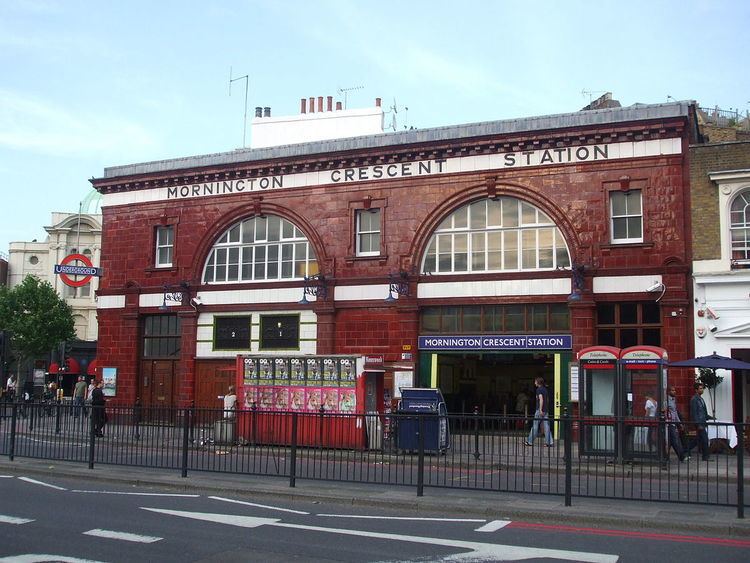Fare zone 2 2013 4.65 million Number of platforms 2 | 2012 4.55 million Opened 1907 | |
 | ||
Local authority Address Kings Cross, London NW1 2JA, United Kingdom Similar London Underground, Belsize Park tube station, Chalk Farm tube station, Goodge Street tube station, Warren Street tube station | ||
Madness one better day 1984 mornington crescent tube station london
Mornington Crescent is a London Underground station in Camden Town in north west London, named after the nearby street. The station is on the Charing Cross branch of the Northern line, between Euston and Camden Town. It is in Travelcard Zone 2.
Contents
- Madness one better day 1984 mornington crescent tube station london
- Location
- Closure and reopening
- In film
- In games
- In literature
- In music
- Connections
- References
The station was opened as part of the original route of the Charing Cross, Euston & Hampstead Railway (now the Charing Cross branch of the Northern line) on 22 June 1907. The surface building was designed by the Underground Electric Railways Company of London's (UERL's) architect Leslie Green. Prior to the station's opening, the name of "Seymour Street" had been proposed. After opening, it was little used, and for many years it was open only on weekdays, and before 1966 Edgware-bound trains passed through without stopping.
Location
The station is situated at the southern end of Camden High Street, where it meets Hampstead Road and Eversholt Street. This junction forms the north-western corner of the boundary of Somers Town, with Camden Town situated to the north and Regent's Park Estate to the south of the station.
The station's location on the Northern line is unusual due to the dual-branch nature of that line. On the Charing Cross branch, Mornington Crescent is between Camden Town and Euston. The City branch also runs from Camden Town to Euston, but via tunnels which take an entirely different route to the Charing Cross branch and which do not pass through Mornington Crescent. Although contemporary tube maps show Mornington Crescent to the west of the City branch tunnels, it is in fact to the east of them: the two branches cross over one another at Euston, so that between Euston and Camden Town, the City branch tunnels run to the west of the Charing Cross branch on which Mornington Crescent is situated. Harry Beck's 1933 tube map represented this correctly.
Closure and reopening
On 23 October 1992 the station was shut so that the then 85-year-old lifts could be replaced. The intention was to open it within one year. However, the state of neglect meant other work had to be completed, and the station was closed until 27 April 1998.
A concerted campaign to reopen the station was launched, due to the popular BBC Radio 4 panel game I'm Sorry I Haven't a Clue. The show frequently features the game Mornington Crescent, which takes its name from the station. The station was reopened on 27 April 1998 by the regular cast of the show (Humphrey Lyttelton, Barry Cryer, Tim Brooke-Taylor and Graeme Garden) and a memorial plaque to the late Willie Rushton, one of the longest-serving panelists, was installed at the station in 2002.
During the station's rebuilding, the original distinctive light blue tiling pattern was restored to the station (though taking into account modern requirements). The ticket hall was reconstructed and the original emergency stairs closed. A second lift shaft was converted (losing the unnecessary extra two lifts) into a staircase on one side and a series of station facilities on the other.
Since its 1998 reopening, the station has been open at the same times as most other stations, including weekends, in an attempt to relieve the pressure on the increasingly busy nearby Camden Town station.
In film
In games
In literature
In music
Connections
London Buses routes 24, 27, 29, 46, 88, 134, 168, 214, 253, 274 and C2 and night routes N5, N20, N28, N29, N31, N253 and N279 serve the station.
